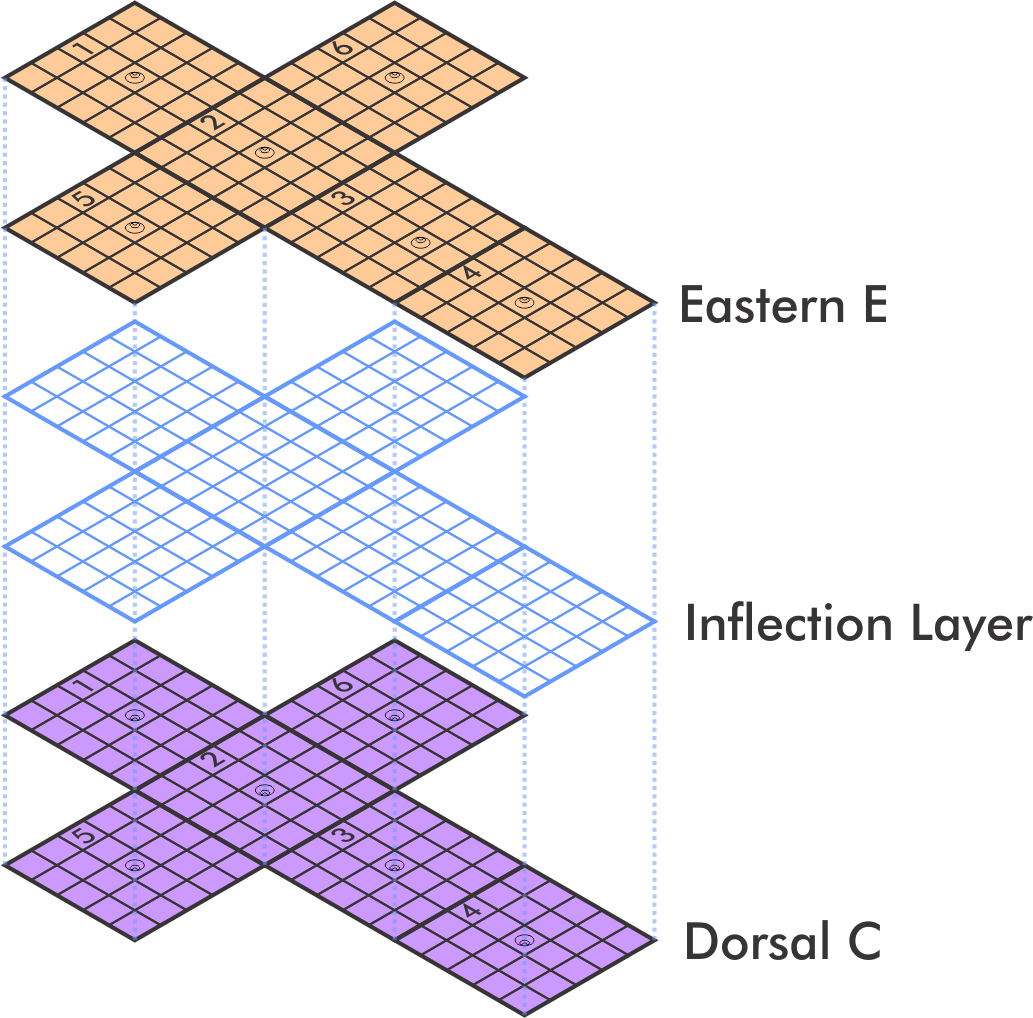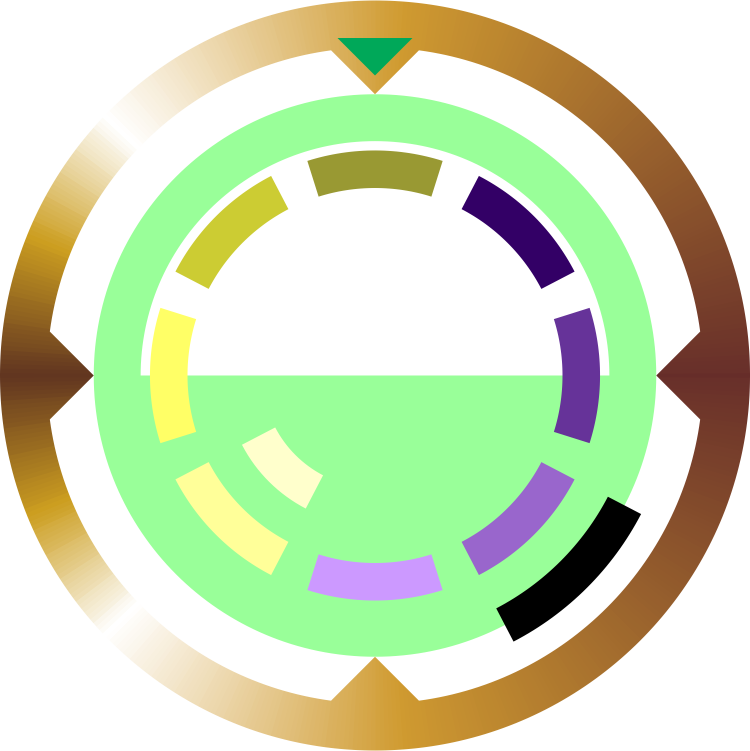Inflection Layer
An inflection layer is the region of space between the two layers of a cube. It can be regarded as the polar opposite of a commissure.
Geography
The air pressure within an inflection layer is extremely low, since the inflection layer is effectively the highest boundary, in terms of altitude, that objects within a cube can reach. Non-buoyant objects in an inflection layer will eventually drift toward one of the layers and then accelerate towards it; while the gravity of the layers does cancel out in the absolute middlemost region of the inflection layer, eventually the gravity of whichever layer is closer to the object will overcome that of the (now receding) more distant layer. Conversely, objects sufficiently buoyant to reach this altitude (such as dirigibles), will be pushed towards the middlemost region of the inflection layer, being forced to either exert thrust or somehow reduce buoyancy to descend towards one cube layer or the other. It is this feature of inflection layers that enables skystations to maintain their altitudes passively.
The relative arrangement of coordinates in space on both layers and the inflection layer of a single cube. Travelling straight 'up' from any location will take the traveller to the same coordinate in the inflection layer, then the same coordinate on the opposite layer. Note that the cube layers are named based on the tesseract they are 'closest' to.






Comments